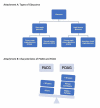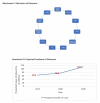Epidemiology of Glaucoma: The Past, Present, and Predictions for the Future
- PMID: 33391921
- PMCID: PMC7769798
- DOI: 10.7759/cureus.11686
Epidemiology of Glaucoma: The Past, Present, and Predictions for the Future
Abstract
Glaucoma is a multifactorial optic degenerative neuropathy characterized by the loss of retinal ganglion cells. It is a combination of vascular, genetic, anatomical, and immune factors. Glaucoma poses a significant public health concern as it is the second leading cause of blindness after cataracts, and this blindness is usually irreversible. It is estimated that 57.5 million people worldwide are affected by primary open-angle glaucoma (POAG). People over 60 years of age, family members of those already diagnosed with glaucoma, steroid users, diabetics, as well as those with high myopia, hypertension, central cornea thickness of <5 mm, and eye injury are at an increased risk of glaucoma. By 2020, it is expected that approximately 76 million people will suffer from glaucoma with that number estimated to reach 111.8 million by 2040. In this article, we perform an extensive literature review focusing on the epidemiology of glaucoma and try to determine the number of people affected; we categorize them by sex, location, and level of income. Furthermore, we strive to estimate the future projection of the disease in the next 20 years (2040) while determining the disease burden, including the cost involved in treating and preventing the disease and the disease and disability projection of glaucoma.
Keywords: disease burden; epidemiology and biostatistics; primary open angle glaucoma.
Copyright © 2020, Allison et al.
Conflict of interest statement
The authors have declared that no competing interests exist.
Figures






References
-
- Primary open-angle glaucoma. Weinreb RN, Leung CK, Crowston JG, Medeiros FA, Friedman DS, Wiggs JL, Martin KR. Nat Rev Dis Primers. 2016;2:16067. - PubMed
Publication types
LinkOut - more resources
Full Text Sources
Other Literature Sources
Medical
Miscellaneous
